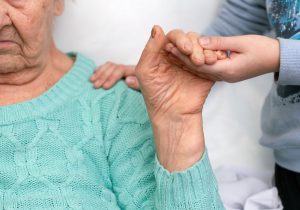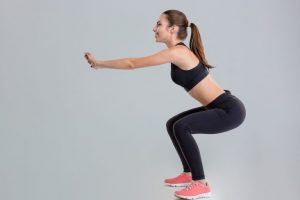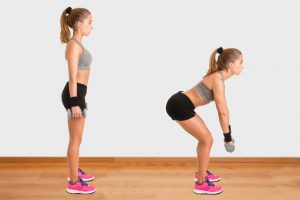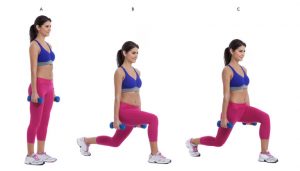How much weight do you think you can lift? Maybe 50 or 60 pounds at a time? The National Institute on Occupational Safety and Hazards states that one person should not lift more than 35 pounds when moving another person on their own.
You may know that you are not able to physically lift your loved one and worry about what you will do when they need your help. It is important to know how to move another person without hurting yourself.
When you take on the responsibility of caregiving for a loved one, you can face many unique challenges. There may be situations you have never considered before embracing this role.
While caring for an elderly or disabled loved one, you will likely need to assist in lifting and transferring them. This can mean helping them to the toilet, out of bed, into the car, or up from a chair. If you are a petite or average-sized woman caring for a much larger husband or father, these tasks can create an even greater challenge.
It is crucial to understand:
- How you can hurt yourself
- Strategies for successfully lifting a loved one
- Safe lifting techniques to prevent injury to your loved one and yourself
- Exercises you can do to improve your strength and lifting capability
How You Can Hurt Yourself Lifting and Transferring a Loved One
Injuries are most likely to happen when you do the same motion over and over. One of the reasons that nurses get injured is while moving patients.
According to the Bureau of Labor Statistics, in 2014, the incident rate for overexertion and bodily reaction was five times higher for nurses than the majority of other industries. Nurses that are professionally trained are still commonly injured.
Out of every 10,000 home healthcare workers, 20.5 will be injured while helping lift a patient. Sprains, strains, and injury to muscles and bones are the most common reasons that home caregivers require time off work. These injuries usually occur when lifting or moving another person.
As a family caregiver, you are at a high risk of injury. You may be assisting your loved one dozens of times in a day, every day of the year.
Caregivers most often hurt their:
- Back
- Neck
- Shoulders
These injuries commonly happen when:
- Helping a loved one who was lying down into a sitting position
- Helping a loved one up from bed
- Bending down over a loved one for an extended period of time
Every time you help your loved one, keep in mind these tips to keep your body safe.
7 Strategies for Successfully Lifting an Aging Loved One
The Caregiver Action Network states that the key to being able to safely assist your loved one at home is to maintain your own health and learn proper body mechanics.
Focus on the following so you will be able to safely care for your loved one:
- Exercise. Exercise aids in developing the strength and flexibility of your muscles, which will help you in your lifting techniques.
- Posture. Practice good posture when standing, sitting, and lying down. Choose comfortable shoes that will help you to maintain correct posture. Focus on keeping your head erect and your shoulders back. Use support when seated for long periods of time if needed.
- Teamwork. When helping to lift and transfer your loved one, be sure to communicate with them about what will be happening, even if they do not seem fully aware. They should put in as much effort as they can. You are assisting your loved one move, not doing it for them. Be aware of any pain or injuries they have, so you can be careful to avoid aggravating those areas.
- Setup. Ideally, your living space should be conducive to transferring your loved one. The room should be free of clutter and hazards to prevent tripping. Any necessary equipment to assist you in lifting should be nearby and ready to use.
- Tools. The revised NIOSH lifting equation says that the maximum weight limit for one person to lift safely is 35 pounds. Insurance may cover tools that can make the process safer, such as transfer boards, lift beds, and sling lifts.
- Motivation. If your loved one is not motivated to move, find ways to encourage them. Suggest that it’s time for waffles, or that their favorite TV show is on. Ask them for their help with something. Make them feel wanted, needed, loved, and excited for life.
- Technology. Look into renting or purchasing items that can save you the heavy lifting. Discuss with your loved ones if you could benefit from using:
- Powered lift chairs that help rise from sitting to standing
- A hospital bed that can be raised at the head
- A wheeled, moveable toileting and showering chair to reduce the number of transfers
- Grab bars and raised toilet seats to allow your loved one to move more easily
- Friction reducing slip sheets that make it easier to slide your loved one into place
- Rollers or slide boards that go underneath a person to make sliding easier
Don’t take on more than you can handle and always be prepared with the proper equipment and tools.
How to Properly Transfer a Loved One Without Hurting Yourself
The use of tools may help reduce impact on your body, but you will still be required to use your own power to move a loved one. How you use your body will drastically reduce your chance of injury.
Follow these tips to properly move a loved one:
- Always lift using your legs, not your back. The muscles in your legs are stronger and bigger than your back muscles. The femur (the bone between your pelvis and knees) is the strongest bone in your body.
- Bend at your knees and hips, as if you were performing a squat. This will prevent strain and possible injury to your back. Think of when you have seen a body builder lifting hundreds of pounds. They drop down into a deep squat with the back straight, then use their leg muscles to stand straight up.
- Keep your feet apart, with one foot slightly in front of the other for balance. An injury can happen when your loved one starts to fall as you are helping them up. Keeping your feet staggered gives you better balance and will help you recover without straining your back.
- Keep your abdominals tight, your wrists straight, and your chin tucked in. Your body is designed to handle lifting weight, but you need to work with your body’s design. When your abdominal muscles are engaged, it protects your weaker back muscles. Straight wrists are better able to handle strain than a dropped or flexed wrist.
- Count to three to begin the lift. This helps build momentum and prepare your loved one for the move. Remember that you are both working together. Find a rhythm that works for both of you and move with it. Similar to a dance, when you are both moving in the same direction at the same time, nobody gets hurt.
- Stay as close to them as possible while you lift. Keep your feet in the direction you want to go and slowly lower them by bending your knees, not your back. When you hold a weight close to your body it requires less effort to move. If you are holding your arms out to pull you are relying on the smaller muscles of your arms to bear the weight.
- Always lift the person by their hips. Never pull or grab under their arms as this can cause extreme pain. The muscles in the arms do not handle force well. Consider the use of a transfer belt if you are not able to hold your loved one by their hips.
- Never twist your body or trunk while holding your loved one. You can only handle 1/3 of the weight when you are twisting, as opposed to remaining straight. Once your loved one is securely standing straight, use your feet and your entire body to turn in the direction you need to go.
- Do not rush. No one is in a hurry, and seniors who are experiencing cognitive decline have slower reaction times, so rushing may confuse them. Give them time to adjust.
Keep in mind that you should encourage them to put in as much effort as possible, but you are there to counteract their weaknesses. If you know their left side is not as strong as their right, become that extra dose of support on their left. If you are helping them to transition to a wheelchair, make sure the chair is close by with the wheels locked.
Exercises for Improved Strength and Lifting Capabilities
One of the quickest ways to start to increase your strength is through walking. Regular walking increases strength inyour leg and back muscles as well as increases blood flow to all muscles. In addition to walking more often, give these basic exercises a try to condition and develop your overall body strength for optimal lifting ability.
Squats:
- 8-10 reps.
- You may add weight using small dumbbells as you feel comfortable.
- Start low and increase as you practice.
Wall push-ups:
- 12 – 18 reps
- Stand a little farther than arm’s length facing a clear wall.
- Place your palms against the wall at shoulder height.
- Bend your elbows as you lower your upper body towards the wall.
- Pause then push yourself straight up again.
Deadlifts:
- 10-15 deadlifts, using a small barbell or dumbbells.
- Start low and gradually increase the weight as you feel more confident.
Step-ups:
- 10 reps on each leg.
- Stand next to a secure step.
- Place your left foot on the step and straighten your leg until your right foot reaches the step.
- Pause and then slowly lower your right foot to the floor.
Reverse lunges:
- 10 reps on each leg.
- Start with low weight dumbbells, possibly 5-10 pounds, and increase as you build strength.
Check out this pamphlet on safe lifting techniques for caregivers for more information on the maximum weight limit for lifting safely.
If you are concerned about being able to manage your loved one’s care at home, please contact our team of experts at Eldercare Services. Our Professional Care Managers are available to discuss your situation at length, and can provide a complimentary assessment to see how we can help.
Resources
American Academy of Orthopaedic Surgeons: Lifting Techniques for Home Caregivers
American Academy of Orthopaedic Surgeons: Seniors and Exercise – Starting an Exercise Program
Centers for Disease Control and Prevention: Growing Stronger – Strength Training for Older Adults
Centers for Disease Control and Prevention: Preventing Back Injuries in Health Care Settings
Centers for Disease Control and Prevention: Strains, Sprains and Pains in Home Healthcare












